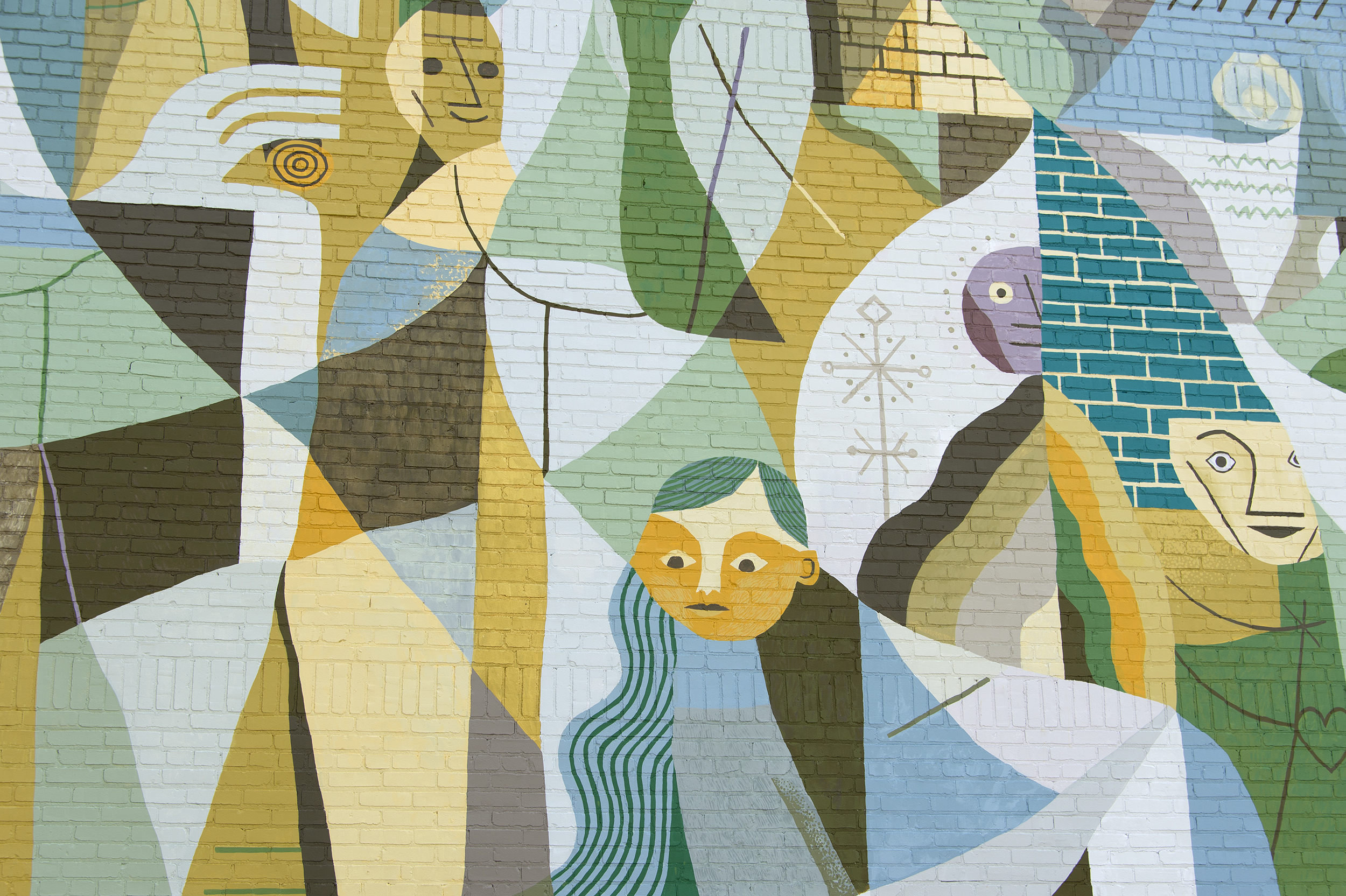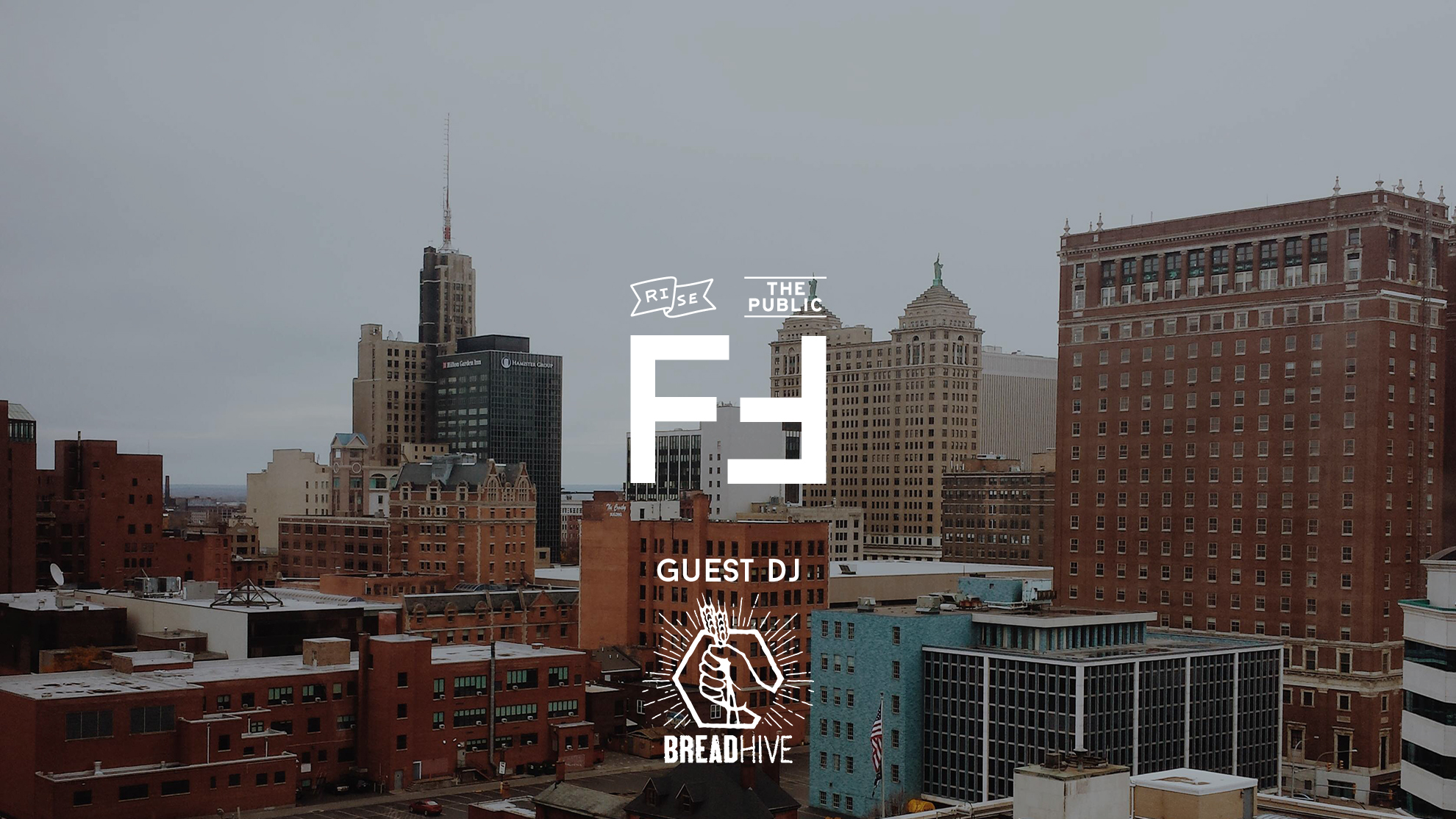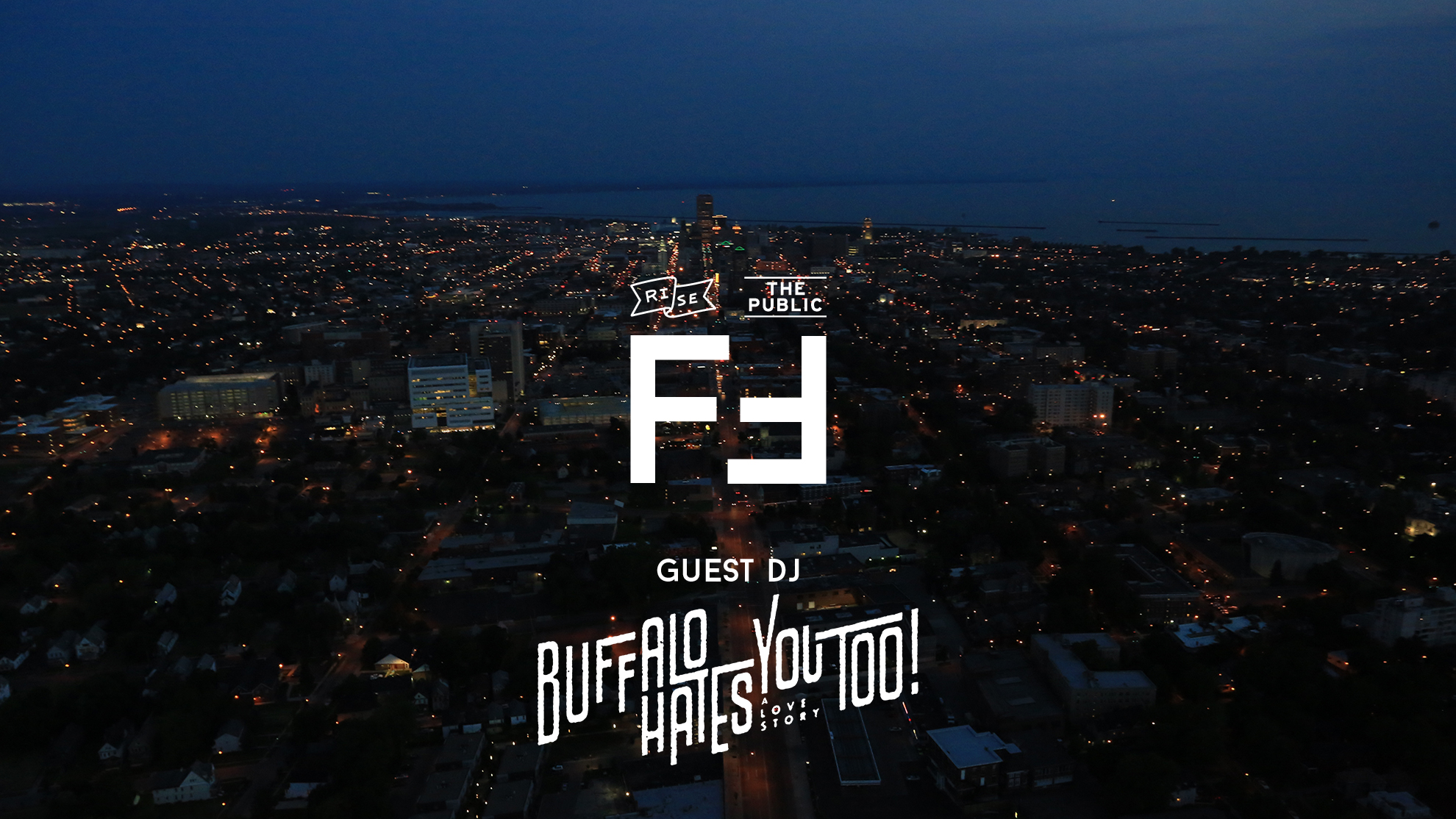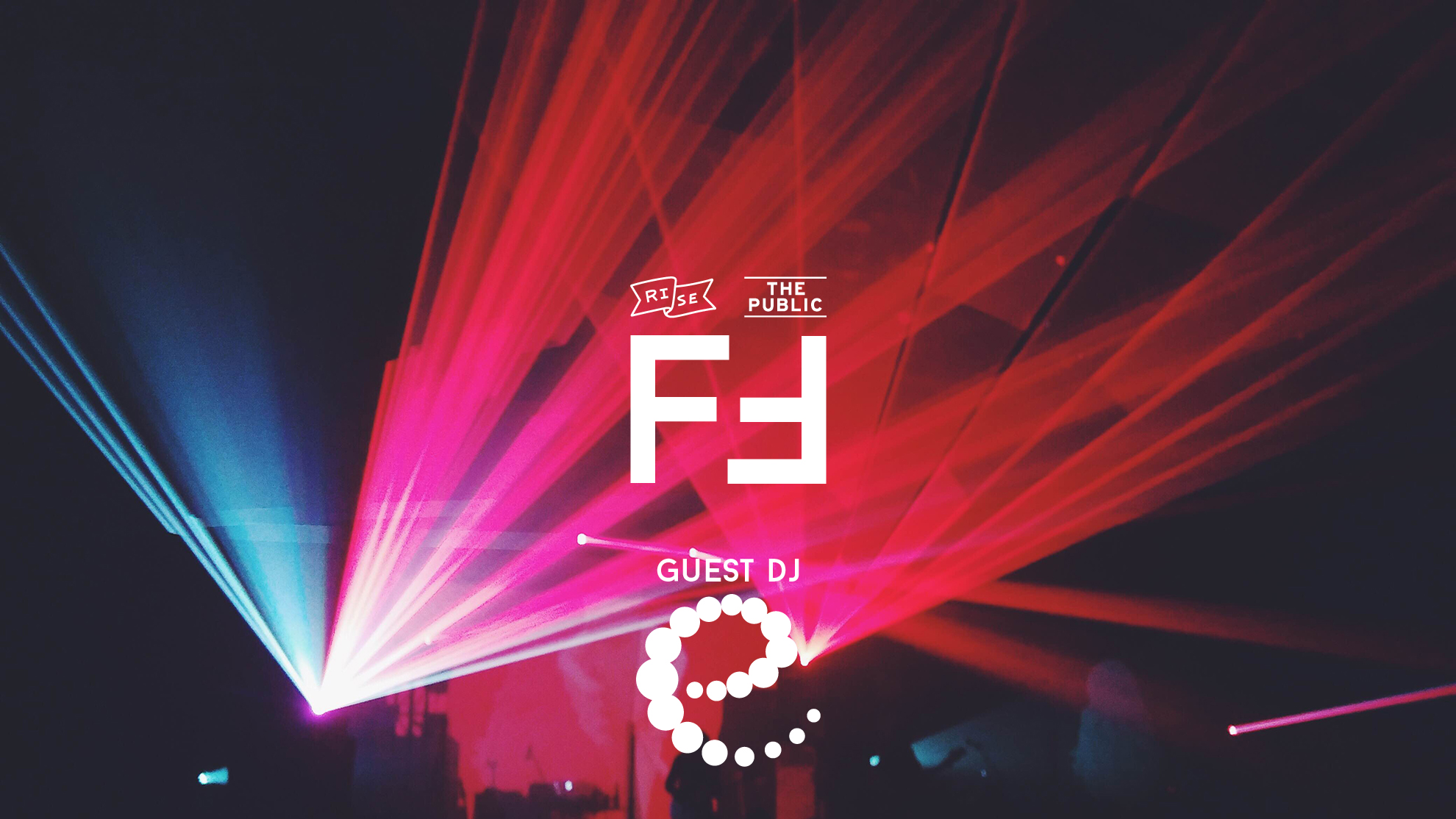By LIFTED podcast host and producer, Holly Kirkpatrick.
“As an artist I’m limited in many fields, but I try to make these limitations useful.” – Otecki
Murals, street art, public art, – whatever you want to call it, paintings are popping up all over the outside of buildings in Buffalo. A mural that recently caught my eye was painted last summer by Polish artist Otecki (real name: Wojciech Kołacz). The piece, called ‘Work and Play’, is on Fillmore Avenue between Broadway and Paderewski Drive, and nestled amongst some major landmarks of Old Polonia. The painting is opposite the Adam Mickiewicz Library and Dramatic Circle (also the home of Torn Space Theater), and is painted right on the side of the Polish Cooperative Savings & Loans building. I recently parked in the lot that the mural overlooks, and experiencing Otecki’s mural brightened an otherwise mundane moment in life.
Otecki is a prolific artist and muralist and has painted all over the world, mainly working in urban environments. He calls himself a “manualist” meaning that he likes to do everything with his own hands where possible. His murals take inspiration from a range of things including folk culture, woodland creatures, and cubism. But he doesn’t just stick to paint. Otecki also makes intricate block print designs, sculptures and graffiti. He says, “if he belongs somewhere, it’s skateboard culture.” (Check out some of his work on Flickr.)
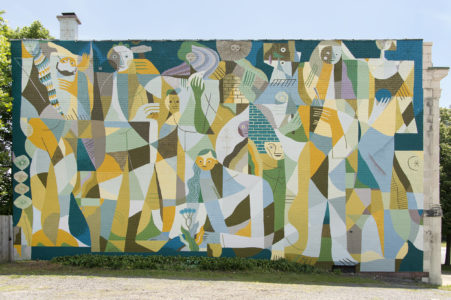
Picture provided by Albright-Knox Art Gallery
‘Work and Play’ is part of the Albright-Knox’s Public Art Initiative, which goes some way to explaining some of the wonderful artwork popping up around the city. We wanted to find out more about Otecki’s work and his process so we asked him some questions and he answered. Here’s the interview.
How did your career as an artist start?
Visual arts were in my field of interest since I was a child. Family supported me a lot, so I was painting as a teenager, then studied printmaking at The Eugeniusz Geppert Academy of Art in Wrocław Poland, where I live. Painting murals and street art helped a lot, as my art became more exposed to the public.
What is your earliest memory of experiencing public art/street art? How did it impact you?
When I was 6 years old, it was in kindergarten. One of the parents offered to paint some cartoonish characters on the dull walls of our classroom. I remember kids were sitting and observing the process for many hours. Somehow It had a massive impact on me, when you are 6 years old it seems like a magic is happening right in front of you.
Amongst other things, you create murals and installations that are often found in urban settings. What draws you to creating art for cities?
I was born and raised in the city. I believe artists always refer to the location where they live. After the regime period cities in Poland were pretty indistinct & dull. So, all forms of creation like stencils, graffiti or street art started to interest me.
How do a mural’s setting influence your design?
Usually I perceive mural as a part of architecture. I have two strategies when I’m designing a mural. The first one is to fit into the surrounding, and respect colors, structures, rhythms etc. Only when I paint on good architecture. The second is to do something opposite, paint something vivid, and add new visible accent to the city space. In most cases I stick to the first strategy, but sometimes when the area is boring, and the architecture is ugly I treat the wall as a blank canvas and a chance to repair it.
What is your process for designing a mural? Take us through the basics of the process from the original idea, to design, to the final piece.
I do some research, as my murals are kind of site-specific artworks. If I can spend some time on the spot I try to meet and talk to people, observe the area etc. If this is not possible I seek some information online. Then I dig into my sketchbooks and search for something that works with the topic. I scan it and work digitally directly on the photo of the wall. I used to freestyle on the wall with no sketch at all, it’s good when you paint something small and have unlimited time.
When you are painting a mural, how do you feel?
The execution of the artwork is a very physically demanding process. So, I’m concentrating, and always have a plan for every day.First days are stressful usually, but then I’m super happy with the process and usually with the final effect. Murals are great because of the size and how they change depending on the spot where you see them. I really like the matte finish of the facade paint and how great the pigments are.
What inspired ‘Work and Play’?
Everyday life of contemporary people.
For your piece ‘Work and Play’, there is a Polish connection. (The neighborhood is historically Polish and you are from Poland.) However, you have said that you designed the piece to appeal to everyone in the neighborhood, rather than just the Polish community. Why? How long did it take you to design and create ‘Work and Play’?
The area is multicultural nowadays, and I wanted to paint something more universal with some room for interpretation. I know that Polish people are rooted there, and I met a lot of them. Younger generations don’t speak Polish anymore, but they are very interested in Polish culture. I’m glad there’s Adam Mickiewicz Library and Polish café and theatre that are very significant for the neighborhood. My initial idea was to paint the composition inspired by Adam Mickiewicz’s four-part poetic drama Dziady, but soon I realized I need to do it more intuitively and create a composition that illustrates everyday life of contemporary people. Designing took me about 10 days. Painting took us two weeks- with the help of Albright-Knox Public Art team.
Your website states that you call yourself a “manualist” and “Anything he can, he does with his own hands, and tries to make it visible. Carve yourself, clean yourself, mix yourself and print it on your own? that’s where the magic is. And every piece of art, even ordered one, should be filled with Yourself, your vision and comment.” With this idea in mind, when you start a project, do you always know how to do every part of it yourself, or do you learn new skills and techniques as you go along?
I believe that intuition is a disinterested cognition. I’d lie if I said that I always know where I’m going. As an artist I’m limited in many fields, but I try to make these limitations useful. Being manualist means I like to do everything with my own hands and avoid commissioning when it comes to art.
Your work incorporates all sorts of disciplines, including street art, graffiti, sculpture, printmaking, and illustration. Is there a particular medium you would like to work with in the future, or a particular skill you would like to explore further?
As I reached the age of 35 I focus more on let’s say serious projects. Because of the fact they’re time consuming I do less but more demanding things and I use less mediums. The problem is I really love all of the ones you’ve mentioned. During the winter I do art in the studio so I paint, illustrate and design murals. In the warm months I try to paint 2-3 murals a season and I’m focused on some sculptural projects. One of my teachers, Eugeniusz Get Stankiewicz, taught me that there’s no border between applied art and personal projects and that border can disappear. This is not academic, and some can say not professional, but I like this approach.
You can see ‘Work and Play’ at 617 Fillmore Ave. Buffalo, NY 14212.

